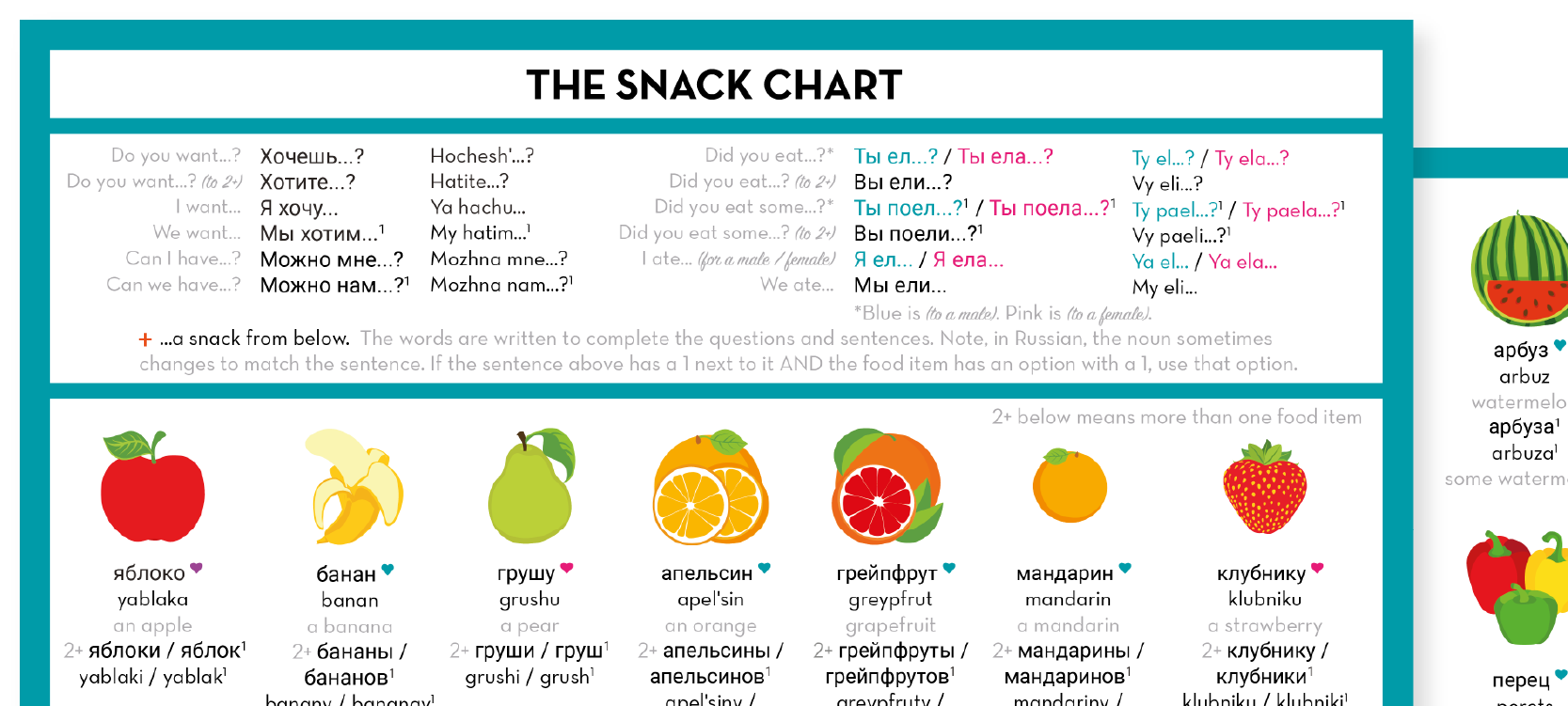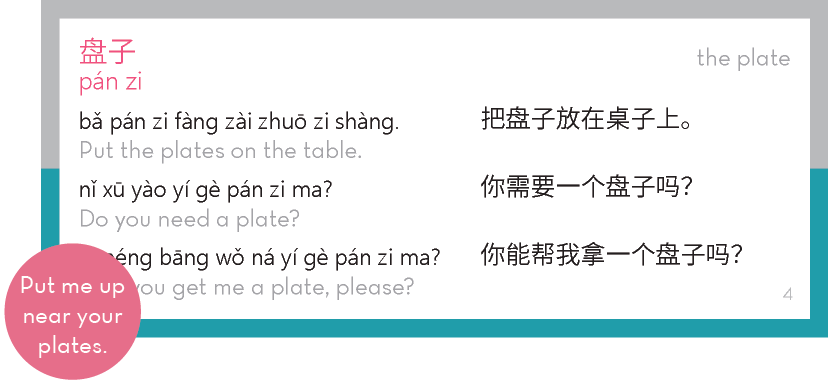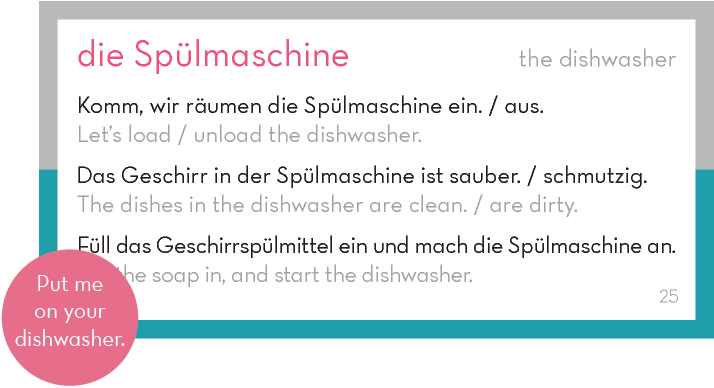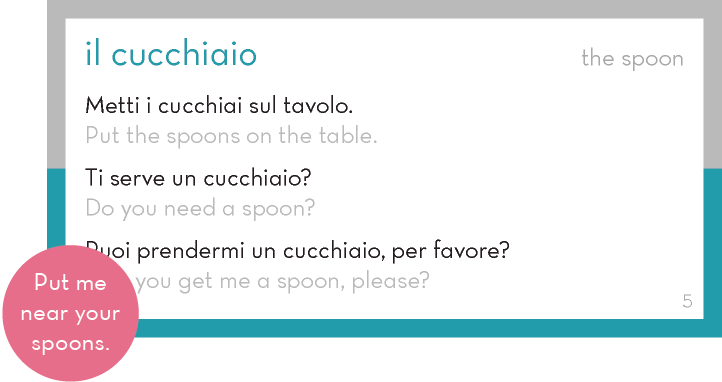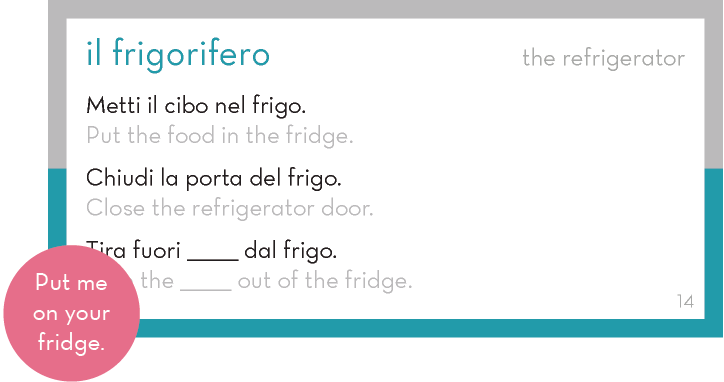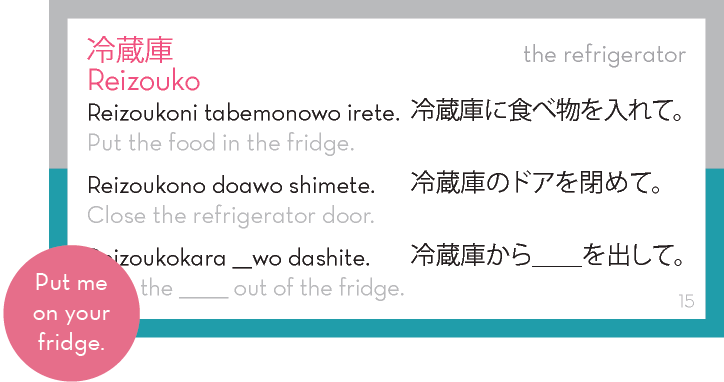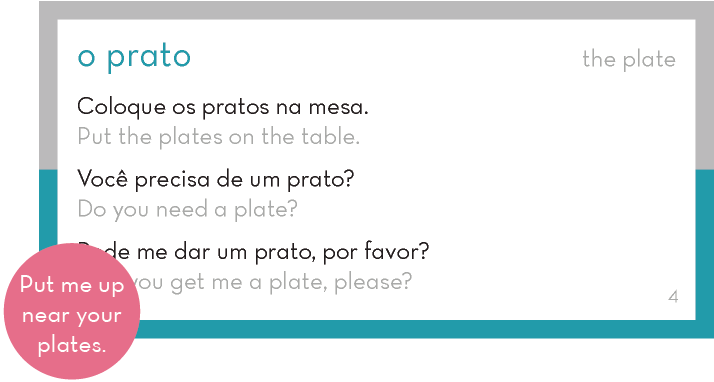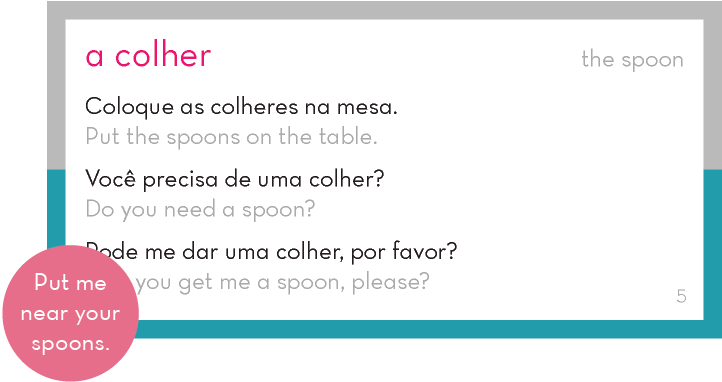

for High School Students
Want an enriched foreign language experience that takes your student beyond memorizing grammar and vocabulary?
After completing traditional high school foreign language courses, A+ students report:
Why keep doing the same thing that isn’t working?

Instead of copying the same old, traditional approach, let’s copy the language teachers who have the highest success rate: moms and dads.
Parents teach babies and toddlers all over the world to speak at a native level and then their kids learn reading, writing, and grammar. At TalkBox.Mom, we copy that same approach so your high school student can experience fluency in another language!
The Key to Success

Think about it. When you’re a baby, first you’re talked to, sung to, and read to.
Then you start talking, singing, and, if you’re allowed to, watching videos.
Then you start telling stories, and then reading, writing, and grammar.
Where do most language programs start? At the bottom, skipping the entire foundation of the language.
I was a French major in college, and I’ve learned more functional French in the last two months with TalkBox.Mom than I ever learned in all that time!
How to Build Fluency

Y’all know what you’re doing when it comes to fluency!!
In my Spanish university classes, we focused on sentence structure, and I have to think SO HARD to understand/translate the stuff I’ve learned.
With TalkBox.Mom, when we speak, it rolls right off the tongue and requires no translation!

Hi! I’m Adelaide, the creator of TalkBox.Mom. I took language classes in both high school and university, completed a study abroad, achieved C1 level (near native), and worked internationally.
Yet I was always translating in my head, waiting for the day when I would “know enough” to achieve fluency.
But when I became a linguist and a mom, everything changed. Watching my own children acquire their first language made one thing glaringly clear—traditional foreign language methods completely miss how fluency is actually built.
So I copied the most successful language teachers in the world—parents—to create a foreign language program where you talk from day 1 and move far down the path of fluency to where the language is part of your everyday life.
Now my family uses multiple languages—even though I grew up speaking just one—and I’m giving my teenager a completely different (and far better!) high school language experience than the one I had.
The TalkBox.Mom Signature Box Program

To build fluency, students (along with at least one parent as their practice partner) go through our signature program, which is a series of nine experiences that include language guides delivered in a nine-box subscription series.
All the native speaker audio for how to pronounce everything in each box becomes available in the companion app as each experience is delivered. So you won’t be left guessing how anything is pronounced!
You can see the nine boxes above — one for each experience. They focus on different topics and go in a specific order because they build on each other.
And unlike other language programs, you actually work through the experiences several times to go deeper as your confidence increases.
This means, you invest once in each box and then you can use the boxes for Year 1, 2, and 3 of your foreign language classes.
Standard High School Track
Modified High School Track
I use TalkBox.Mom for high school, and it’s amazing.
My oldest did dual enrollment for two semesters of Spanish, but he has learned more actually talking and using the language with TalkBox.Mom. Instead of teaching disconnected vocabulary and grammar like in his college class, TalkBox.Mom is all about actually using the language.
WHAT’S IN THE TALKBOX.MOM BOXES?
Each box has 3 challenges that challenge you and your teen to connect, support each other, and have fun as you build this life-changing skill as a Fluency Family (at least one student and parent as a practice partner).
The layouts change in each box depending on what you’re learning.
The first box is The Snacks & Kitchen Box.
The fluency approach of the Snacks & Kitchen box goes deeper than our phrasebook because it helps you to consistently use and exponentially add the language to your everyday life like other Fluency Families.
Here’s a peek of the core Challenges.
CHALLENGE 1

CHALLENGE 2

CHALLENGE 3

Do you see that Challenge 2 isn’t a vocabulary chart? Your high school student won’t just learn individual words. They’ll go beyond memorizing vocabulary and grammar — and actually use vocabulary words in grammatically correct sentences.
And Challenge 3 isn’t flash cards! One of the secrets Fluency Families know is that your recall doesn’t come from a piece of paper — but from actual experiences with your family.
HOW TO USE YOUR BOX

STEP 1
Your high school student chooses a phrase from the Proven Roadmap laid out in your first Challenge and writes it in English in your Power Practice Planner. Start with phrases you and your teen can add to your life more often.

STEP 2
Your teen practices the phrase with you in a 15 minute Practice Session—complete with Native Speaker Audio, practice scenarios, and fun. Your teen then writes the phrase in your chosen language in the Power Practice Planner.

STEP 3
Your teen uses the phrase at least once before your next Practice Session—either in real life or in a situation they create.
High School Students complete two 15-minute Practice Sessions per day with new phrases and then use the phrases outside of the Practice Sessions.
For a stronger emphasis on writing, students can complete Copywork assignments in a separate notebook during Review Sessions for phrases they’ve achieved fluency in speaking.
Try this out with your teen so you can see if your teen is a good fit for our program.
STEP 1: PICK A PHRASE

First, we’ll start with a phrase that’s easy to add to your life, “I’m hungry.”
Your teen will write the phrase down in English in your Power Practice Planner.
Then they’ll simply click the heart next to the phrase in the TalkBox.Mom Companion App.
STEP 2: PRACTICE THE PHRASE
This example is in Spanish. TalkBox.Mom offers 11 different languages. Click to hear another below!
To practice the phrase, our focus is NOT on saying it perfectly — it’s on having fun!
If you’re having fun, you can hear better. And if you can hear better, you can pronounce the words better over time.
We want to support each other for trying and putting ourselves out there.
So first practice the phrase with the native speaker audio.
Then practice the phrase in a situation or scenario your teen thinks they would use the phrase.
For example, your teen could go to the kitchen, play the audio, say the phrase, and then eat a snack.
Next, say the phrase with an emotion—like excited, sad, or shy.
Now your teen can write the phrase in the chosen language in your Power Practice Planner. ✨
STEP 3: USE THE PHRASE AS LIFE HAPPENS
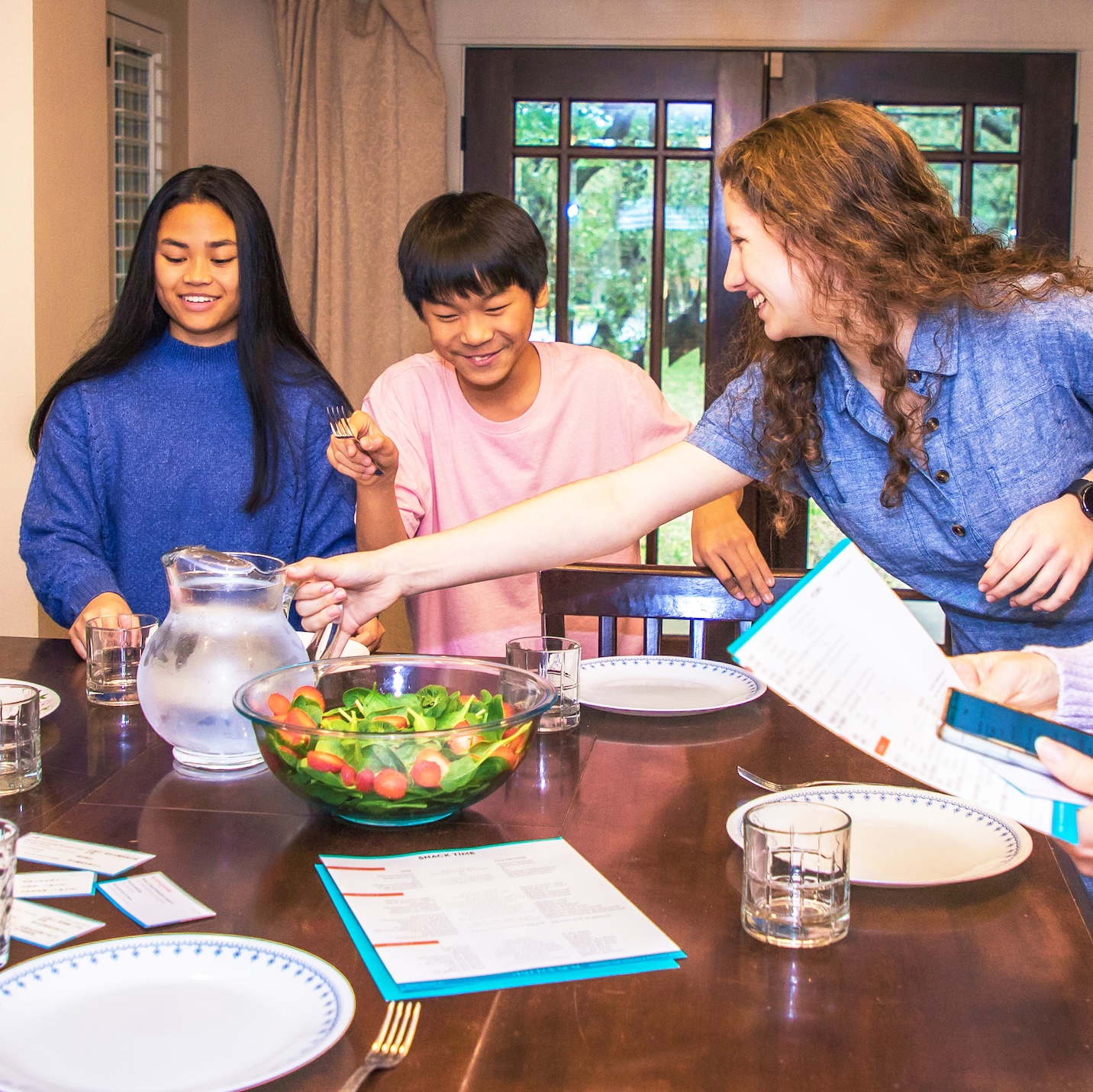
After completing this Practice Session, your high school student completes nine more Practice Sessions with you — always with one new phrase.
Before each new Practice Session, your student and you will review each previous Focus Phrase in the Challenge in a situation or with an emotion. After practicing verbally, your student can complete copywork in a separate notebook for each of these phrases.
After 10 Practice Sessions in a week, you will move on to the next Challenge.
CHALLENGE 2

This example is in Spanish. You can see this example in 10 different languages below!
This next Challenge isn’t a vocabulary chart. Rather, everything is written PROPERLY to fit into all the sentences at the top of the posters.
So if your teen wanted popcorn, they could look at the phrase at the top for “I want…, please,” and add popcorn to sound just like a native speaker. After 10 Practice Sessions with 1-2 new Phrases in each Practice Session, you’ll move on to the next Challenge. (This typically takes 5 days, plus one day for reviewing Challenge #1.)
CHALLENGE 3




This example is in Spanish. You can see this example in 10 different languages below!
The language guides in this Challenge aren’t flash cards. They’re label cards!
These cards go near the item you’re talking about, so your high school student can use the phrases easily.
For example, I have the bowl, plate, and cup cards on the inside of my cabinet doors where I have those items. My high school student opens it up, remembers we’re using another language, and use one of those phrases.
After 10 Practice Sessions with 1-2 new Phrases in each Practice Session, you move on to the next Box.
After completing all 9 Boxes for the Standard High School Track, you’ll go through your Boxes again for year 2, completing new Practice Sessions with new phrases you haven’t practiced yet.
Your Student’s Workload
Students complete two Practice Sessions per day and review their past Focus Phrases in their Current Challenge before each Practice Session.
Starting the second week, one day per week is reserved for Reviewing Past Focus Phrases in Past Challenges and their cultural experiences.
At the end of the year, students review all of their Past Challenges (with optional testing) and present their final cultural experience: a full cultural itinerary in a country that speaks the language. Going on the trip is optional but encouraged!
This workload is equivalent to 120 hours. Always check with your school, school district, state, and college requirements to verify their requirements with both scope and language choices.
Year 1
270 Practice Sessions
243 Review Sessions in Current Challenges
61 Review Sessions in Past Challenges (Fridays)
27 Final Challenge Reviews
Cultural Experience (Weekly)
Year 2
270 Practice Sessions
243 Review Sessions in Current Challenges
73 Review Sessions in Past Challenges
27 Final Challenge Reviews
Cultural Experience (Weekly)
Year 3
270 Practice Sessions
243 Review Sessions in Current Challenges
124 Review Sessions in Past Challenges
27 Final Challenge Reviews
Cultural Experience (Weekly)
You can modify this experience if you’d like to purchase 4 Boxes the first year and 5 Boxes the second year. You would loop through your first 4 Boxes twice the first year with new material the second time through. Then you would complete the next 5 Boxes, looping through Boxes 5 – 8 twice.
For year three (optional), you would loop through all nine boxes like in the Standard Track.
My daughter passed the CLEP test and received two semesters of college Spanish thanks to TalkBox.Mom!
For her test prep, she used two books from half priced books to practice grammar and read paragraph passages, but the rest was TalkBox.Mom.
She says it was TalkBox.Mom’s variety of vocabulary that really helped her to pass! Now she doesn’t have to take those classes in college, which is a significant savings!
Ends in Success
Follow our fluency approaches used by over 100,000 to talk from Day 1.
As you cheer each other on and become more confident together, this will be a highlight of their high school experience.
Only focus on what’s effective.
Your student will have a written record of their work, optional testing during their final Challenge Reviews, and complete a cultural experience.
Every single phrase has Native Speaker Audio, so you’re never left guessing.
Your student will graduate with the ability to use their language skills and build on them through new conversations and experiences long after graduation.
SAVE A TON OF MONEY

If a tutor came to your home and did the 30 Practice Sessions in one Box, it would cost
at least $750 per student.
We took that experience and put it into a
$90 box
for you, your student, and any other immediate family members that are participating.
Over your three year experience, that’s less than $10 per week for your entire family (or at least you and your high school student) to be speaking another language!
And your results are unparalleled because your student can practice with you throughout the week!
START YOUR HIGH SCHOOL EXPERIENCE
Free U.S. shipping!
Modified Track Package
Get Started For Less

$364
Renews for the next four boxes and then 1 box at $86 per box.
Standard Track Package
The Full Program

$798
No future renewals.
Standard Track
+ Consistency Crew

$868
No future renewals.
✨ IN THE PACKAGE ✨

High School Instructor’s Guide
Get everything you need to confidently use TalkBox.Mom for high school!
This PDF guide walks you through how to use our program for high school, with clear explanations for Practice Sessions, Review Sessions, cultural experiences, optional testing, and grading.
You’ll also get full 36-week schedules showing exactly which Challenges to pull phrases from each day, and which sets to review, making it easy to track progress across all 9 boxes.

Power Practice Planner
The Power Practice Planner helps you keep a clear, written record of your work for the entire school year, complete with dates. The planner covers all nine Boxes (one full round) and makes it easy to track your Practice Sessions in one place. It’s simple to show your school or district your work.
Also, high school never runs 36 weeks straight without breaks—thank goodness! With the Power practice Planner, you can jump right back in after a break, knowing exactly which phrases to review before you add in a new phrase. You always know where you’re at in the program.
The Power Practice Planner is also a built-in accountability partner—keeping your high school student on track without the stress and reminding them of all of their accomplishments so far.

Phrasebook in your Box Language
The Phrasebook takes on another Fluency Approach of exclusively using needs and wants — which brings an extra layer of fun and excitement to your high school language journey.
As you work through your Boxes, you’ll add a phrase from the phrasebook every couple of Practice Sessions.
You and your high schooler will have fun choosing from these diverse phrases, and the phrases will help you mix and match phrases because of the fluency approaches in your boxes!

Consistency Crew
This isn’t your mother’s foreign language class! We’re going beyond memorizing grammar and vocabulary to using vocabulary in grammatically correct sentences.
This might be easier to understand if it’s modeled and practiced with you again and again. That’s where the Consistency Crew comes in!
With the Crew, half of your weekly Practice Sessions are already scheduled and led live or through video prompts alongside other Fluency Families—so you don’t have to guess what to do or when.
You’ll also get extra support and expert help through our VIP Q&A if you need it.
REFUND POLICY
You can cancel future payments any time. But we do not take returns on subscription box purchases—whether delivered or pre-paid.
We know that if you and your high school student work through the boxes, you’ll be talking in the language.
Be sure you are ready to commit before you hit buy.
If you’re not sure, buy one box at a time on our standard Box page because you can cancel future payments any time. Or check out our blog posts to see if you’re a good fit for our program









